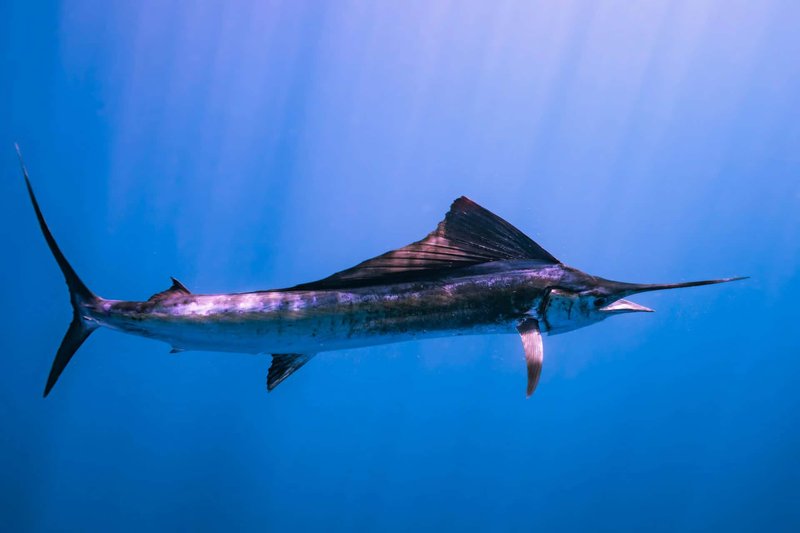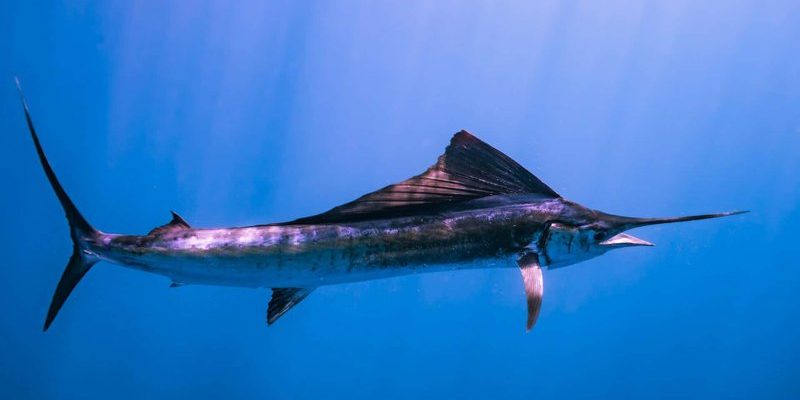
Swordfish are primarily ocean-dwellers, but their habitats can be a bit more varied than you might expect. It’s like looking for a rare book in a massive library—once you know where to look, you might find it in unexpected places. So, let’s dive into the world of swordfish and explore the oceans, rivers, and unique habitats where these incredible fish can be found.
The Open Oceans: Swordfish’s Primary Home
Most swordfish thrive in the vast, deep waters of the ocean. They are *highly migratory*, meaning they travel long distances in search of optimal feeding and spawning conditions. Think of them as the nomads of the sea, moving from one area to another based on food availability and temperature.
The swordfish primarily inhabit the warm to temperate waters of the Atlantic, Pacific, and Indian Oceans. In these regions, they tend to stay in depths of around 200 to 800 meters (650 to 2,600 feet) during the day, but they come closer to the surface at night to hunt. This nocturnal behavior is pretty fascinating; it’s like having a nighttime job while everyone else is sleeping!
Regions of Abundance
If you’re trying to pinpoint where you might find swordfish, here are some key areas to keep in mind:
- The North Atlantic, particularly off the coasts of the U.S. and Canada.
- The Mediterranean Sea, where they are abundant and often sought after for fishing.
- The South Pacific, especially around the waters near New Zealand and Australia.
- The Indian Ocean, where they roam freely in search of food.
The combination of warm water and abundant food makes these regions perfect for swordfish. It’s like they’ve found the best restaurant in town and keep coming back for more!
Rivers and Estuaries: A Rare Encounter
You might be surprised to learn that swordfish can occasionally be found in rivers and estuaries, though this is not common. They seem to prefer the salty embrace of the ocean but have been spotted in places where freshwater meets saltwater. This transitional zone is known as an estuary, and it’s where many marine species thrive because of the rich nutrients.
While swordfish are primarily ocean dwellers, they can sometimes venture into coastal rivers, particularly during spawning seasons. However, sightings in rivers are rare and usually involve younger swordfish that are seeking a change of scenery. Imagine a teenager exploring a new neighborhood—curious and adventurous, but not entirely at home.
Why Estuaries Matter
Estuaries play a crucial role in the life of many fish, and swordfish are no exception. Here’s why these habitats matter:
- Nutrient-Rich: Estuaries are filled with nutrients thanks to the mixing of freshwater and saltwater, creating a perfect feeding ground for young fish.
- Shelter: Young swordfish can find safety from predators in the complex habitats formed by vegetation.
- Breeding Grounds: Some fish use estuaries as breeding sites, giving birth to young ones in a safe environment.
So, while it’s not common to find swordfish swimming alongside trout in a river, they can occasionally make an appearance, highlighting the importance of these unique habitats.
Temperature Preferences: Warm Water Lovers
Swordfish have specific temperature preferences that guide where they are found. They enjoy warmer waters, generally between 18°C to 22°C (64°F to 72°F). This is a bit of a Goldilocks situation; the temperature needs to be just right for them to thrive.
As migratory fish, swordfish will follow the warmer currents of the ocean. This is similar to how we might avoid a freezing cold beach but flock to a sunny one. During different seasons, they can be found in various locations depending on the water temperature.
Climate Change and Habitats
It’s worth noting that climate change is affecting ocean temperatures, which could impact swordfish habitats. Warmer waters may push these fish to new areas, potentially altering their migratory paths. Here’s how climate change could impact them:
- Range Shifts: As water warms, swordfish may relocate to cooler areas, affecting local fisheries.
- Breeding Changes: Altered temperatures could influence their spawning patterns.
- Food Availability: Changes in the marine ecosystem could impact the availability of prey.
Keeping an eye on these trends is crucial for understanding how swordfish populations might change in the future.
Feeding Habits and Their Effect on Habitats
Swordfish are carnivorous and have a varied diet that mostly includes squid, fish, and crustaceans. Their long, pointed bills are not just for show; they use them to slash through schools of fish, making it easier to catch their meals. Picture a chef expertly slicing through vegetables—it’s all about technique!
This diet preference influences where they are found. In areas with abundant squid and fish populations, you’ll likely find swordfish. They’re like the hungry diners seeking the best buffet—always on the lookout for a good meal.
How Feeding Affects Their Movement
Their feeding habits lead swordfish to move around a lot. Here’s how their diet influences their habitats:
- Migration: As prey species move in search of food, swordfish follow suit.
- Seasonal Patterns: In warmer months, prey becomes more abundant, leading to increased swordfish activity.
- Local Ecosystem Health: The health of the marine ecosystem directly impacts their food sources.
In essence, swordfish are not just passive residents of their habitats; their feeding behaviors shape where they go and how populations change.
Conservation Efforts and Future Habitats
With all the fascinating aspects of swordfish habitats, they face several challenges that necessitate conservation efforts. Overfishing, habitat degradation, and climate change impact their populations. Imagine a once-thriving café that’s lost customers due to rising rent and poor service—it’s a tough situation for everyone involved.
Conservation efforts aim to ensure the sustainability of swordfish populations and their habitats. Here’s a glimpse into what’s being done:
- Fishing Regulations: Many countries have implemented fishing quotas to ensure sustainable harvesting.
- Habitat Protection: Efforts are underway to protect marine areas critical to swordfish and their prey.
- Research Initiatives: Understanding swordfish migration and breeding patterns helps in creating effective conservation strategies.
The goal is to maintain a healthy balance in the ocean ecosystems that these magnificent fish call home.
Final Thoughts on Swordfish Habitats
Swordfish are remarkable creatures that roam the oceans with grace and speed. Their habitats are mainly found in the warm, deep waters of our oceans, but they occasionally explore shallower coastal areas and estuaries. As we’ve seen, their temperature preferences, feeding habits, and the impact of climate change all play critical roles in where they are found.
Understanding swordfish habitats is not just an academic exercise; it has real implications for conservation and ocean health. By taking steps to protect their environments, we can ensure that these incredible fish continue to thrive. So next time you think of swordfish, remember that they’re more than just a tasty dish—they’re an essential part of our ocean’s ecosystem.

